About our chopsticks
Basic material [lacquer]
Etymology of lacquer
A combination of the two words "Uru" and "Shi" in the Yamato language
Yamato word "ur" = wet, fresh, shiny, etc. Yamato word "shi" = meaning to hold, fix, fix, rest, etc. The theory that these two words are connected
(Theory by Arisumi Mitamura / Professor, Faculty of Fine Arts, Tokyo University of the Arts / Japan Fine Arts Exhibition Councilor / Japan Contemporary Craft Artists Association Councilor / Vice President, Japan Lacquer Culture Research Institute)
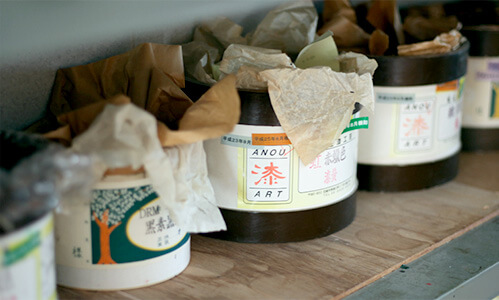
What is Wago
A unique word from ancient Japan. It is also called "Japanese" for Chinese words other than Chinese and foreign words, especially Chinese words. While the Chinese word is "sound," the Yamato word is "kun." Example) Mimi, one, two, see It is a spoken word that Japanese people had before the introduction of Chinese from China, and it is thought that each of the short vowels has a meaning.
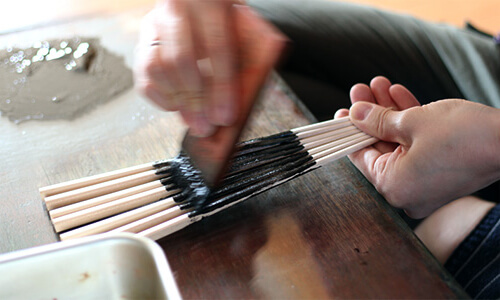
There are various other theories.
-
◎ Beautiful = The theory that Urhashi has transposed
Because the painted skin is glossy and has a moist taste, it is said to be "beautiful" as a word to describe its beauty, and it is said that Ha has been removed from Urhashi. -
◎ The theory that Uruhashi broke up into Urushi and Hashi
The earliest autumn leaves in the mountains are the poison ivy plants. The representatives are lacquer trees and goby trees. Since the leaves turn beautifully, the four letters of Uruhashi are separated into Urushi (ha is omitted) and Hashi (Uru is omitted). The theory that the goby turned into a goby. -
◎ Junju = The theory that Ursil has transposed
-
◎ Moisturizing = glossy juice (liquid), the theory that it represents lacquer liquid.
The "drying" of lacquer has the property that it never dries in the act of "drying" in general. Moisture, or moisture, is required to dry (harden) lacquer. The optimum conditions for drying lacquer are: -Temperature 20-30 ° C-Humidity 70-80% To compensate for these humidity, lacquer craftsmen set up a closet-shaped "Urushi bath (room)" that retains moisture. While calculating the temperature and humidity, we will finish it to a certain color and luster. For this reason, the drying of lacquer is called "steaming" or "shimesu (wetting)" in craftsman's terms. It can be said that the Chinese character "lacquer" that can be obtained from wood is not "kihen" but "sanzuihen" that symbolizes water because it is based on these properties. -
◎ The theory that broth = Nurusil has transposed
-
◎ Moisture = The theory that Urhoshi has become noisy
The theory is that it is based on the word "moisturizing", which expresses a fresh, abundant, and glossy appearance, and it has come to be called "urushi" to apply it to things to make it beautiful and abundant. -
◎ The theory that it comes from Junshi (Urushi)
The theory is that Junshi, such as Hani and Katashi, is a general term for people who work to create luster, which later came to represent the material itself. -
◎ The theory that it came from the ulasi of India
In the state of Banjap, India, the genus Urashi is called Urashi, and it is said that it was imported into Japan and transferred to Urushi. -
◎ The theory that it may have been transposed from Ushitsu
Chinese characters were introduced to Japan around the 5th century. There is also a Chinese character called lacquer, and the Chinese reading called Shichi Shitsu is followed by the prefix U to become Ushitsu, and the theory is that Ushitsu has been converted to lacquer.
Use of lacquer
Coating filmLacquer coatings have excellent chemical properties as coating agents.
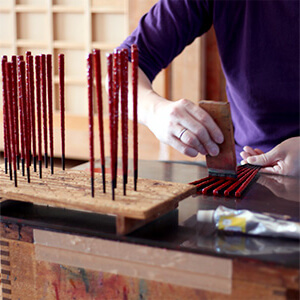
- Not affected by acids such as hydrochloric acid and sulfuric acid
- Not affected by alkali
- Not affected by aqua regia used when melting gold and platinum
- Waterproof
- Has antiseptic properties
- Insect repellent
- Has antibacterial properties (exhibits high antibacterial properties against "Salmonella", "Vibrio parahaemolyticus", "E. coli", etc.)
- Due to its excellent heat retention and low heat conductivity, it retains a moderate amount of warmth in the hands. (Porcelain, pottery, lacquer ware in descending order of conductivity)
- Anticorrosive. In iron kettles, etc., lacquer is applied and then the surface is baked to prevent rust.
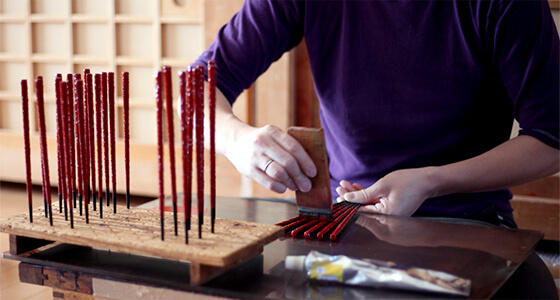
glueLacquer has also been used as an adhesive.
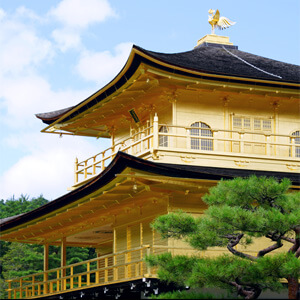
- Tamamushi Shrine, a national treasure of Horyuji Temple, is the oldest urushi-e painting in Japan (apply lacquer and glue gold powder before it dries) …… Asuka period
- Dry lacquer statue for worshiping God (Make a shape with clay, glue linen cloth to the outside with lacquer, dissolve the clay inside with water, and form the shape with lacquer on the outside) …… Nara period
- The gold leaf in the interior of Kinkakuji was glued with lacquer. …… Muromachi Period
- "Upholstery" and "clothing", which are familiar to us today, are techniques that increase the strength of cloth by adhering it with lacquer.
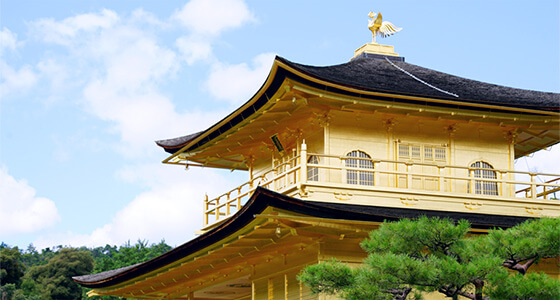





![About Hyozaemon chopsticks Basic material [Wood]](https://www.hyozaemon.co.jp/img/about/urushi_pu_bnr01.jpg)
![About Hyozaemon chopsticks Basic material [Wood]](https://www.hyozaemon.co.jp/img/about/urushi_pu_bnr01_sp.jpg)



